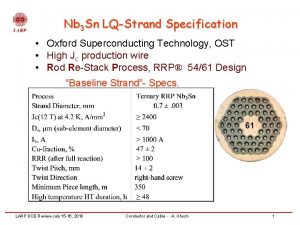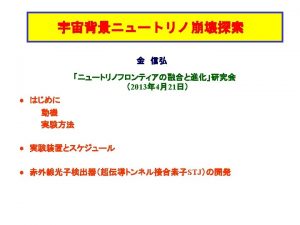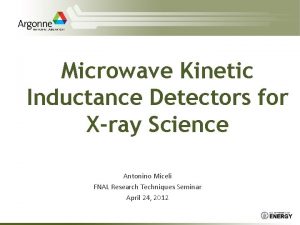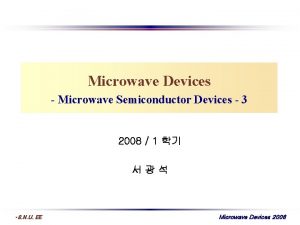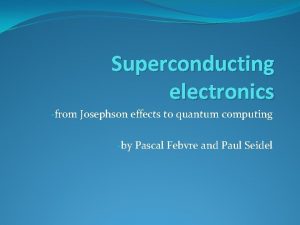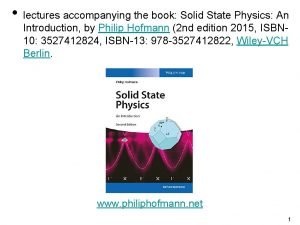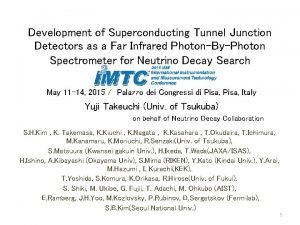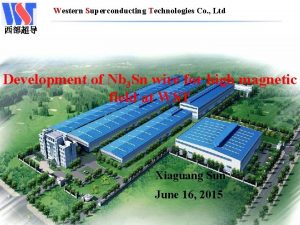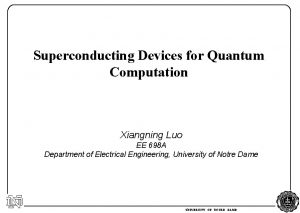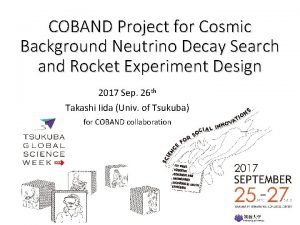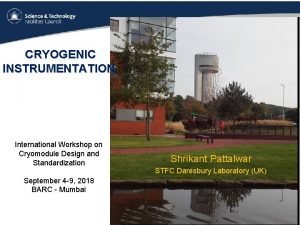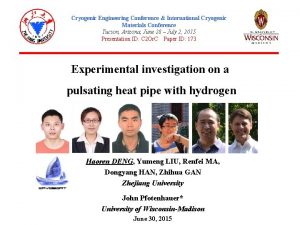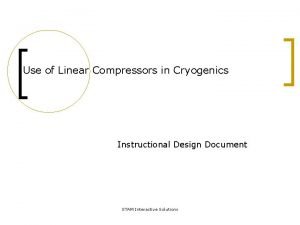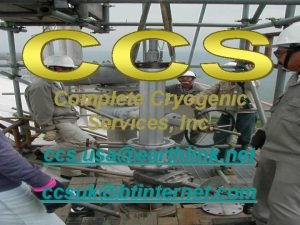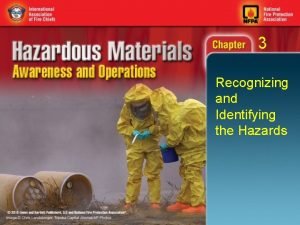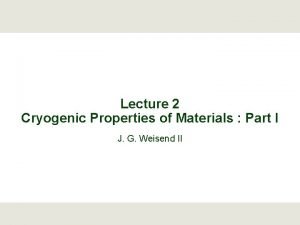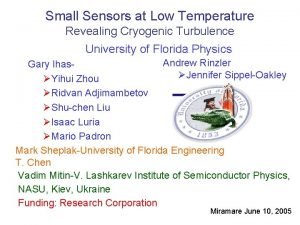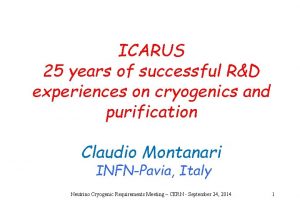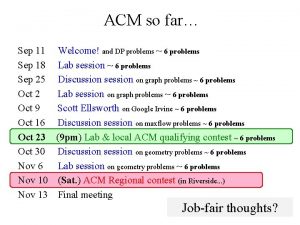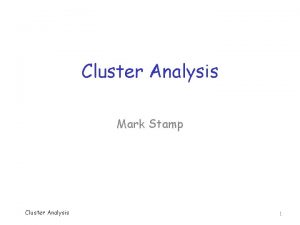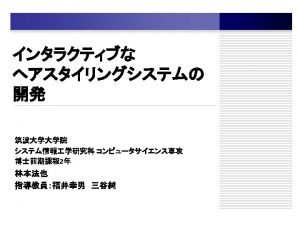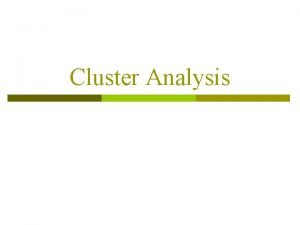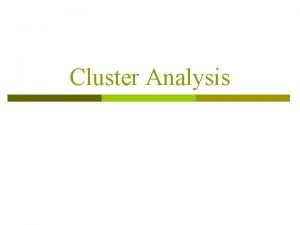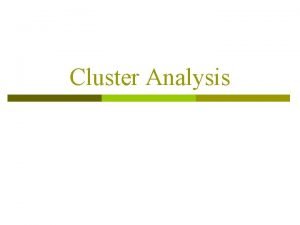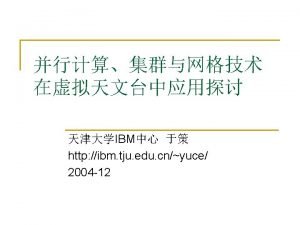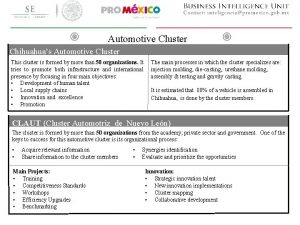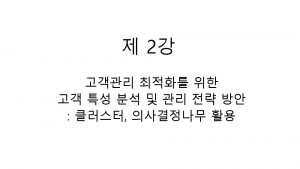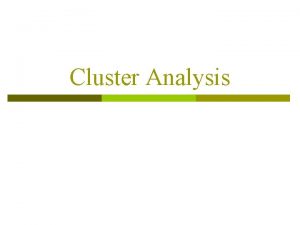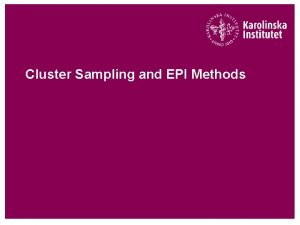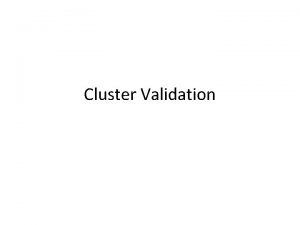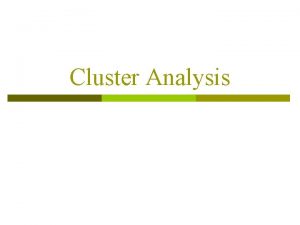CRYOGENIC CLUSTER DAY PROGRAMME SEP 28 2011 Superconducting




















- Slides: 20

CRYOGENIC CLUSTER DAY PROGRAMME SEP 28 2011 Superconducting Fault Current Limiters Chris Waller Current Solutions for Future Networks

The John Vandore Challenge • Squeeze my normal 110 slides which takes an hour into 15 minutes! • So here goes. Current Solutions for Future Networks

The fault current challenge - 1 Circuit breaker G Load Generator Copper line Short circuit: Fault Current unrestricted by load G G Circuit breaker interrupts fault current Current Solutions for Future Networks

The fault current challenge - 2 Image © Palm Harbor Fire Department Current Solutions for Future Networks

The fault current challenge – 3 G G G Current Solutions for Future Networks Climbing fault current

The fault current challenge - 4 Upgrade Circuit Breakers Install high resistance Transformers G G Split the network Current Solutions for Future Networks Install Reactors

The fault current challenge - 5 G G Zero resistance Instant rise in resistance limits fault current G G Current Solutions for Future Networks Circuit breaker can operate safely

The fault current challenge - 6 132 k. V 33 k. V 40 M W Wind farm 132 k. V 33 k. V Load sharing Security of supply Generator 11 k. V fault prone network Generator Rural Sensitive Load Semi-Urban Current Solutions for Future Networks Plenty of capacity Too Much Load Urban

The fault current challenge – eureka Key characteristics of Fault Current Limiters based on superconducting materials Under normal operation a fault current limiter inserts negligible impedance into the network When a fault occurs the limiter‘s impedance rises rapidly, reducing the current flowing through it

Fault Current Limitation Some types of Superconducting Fault Current Limiters DC Resistive Superconductor quenches under excessive fault current reverting to a normal conductor, inserting resistance. Shielded core Induced current in the Superconducting tube shields the iron core until excessive current causes quench. Pre-saturated Core Iron core driven into saturation by superconducting DC winding. Fault current opposes the saturation and increased impedance switched into the circuit.

Early Projects Project 1 & 2 Resistive Type utilising Bulk BSCCO Nexans Superconductors Current Solutions for Future Networks Project 3 & 4 Pre Saturated Core Type utilising BSCCO Tape Zenergy Power

Early Projects 11 k. V / 100 A 1 st in commercial network operation 11 k. V/400 A 11 k. V/1250 A 33 k. V / 800 A 11 k. V/ 1250 A Mg. B 2 demonstrator 2009 2010 2011 Current Solutions for Future Networks 2012 2013

Resistive Limiters Critical Characteristics T (Temperature) Normal conducting properties Superconducting properties B (magnetic field) Normal conducting properties J (current density) Superconductors remain in the superconducting state as long as the current, temperature and flux density remain below the critical values.

Resistive Limiters Superconducting Characteristics – Resistive Fault Current Limiters Low Superconducting range Critical Value Resistance High Normal range Equivalent circuit

Resistive FCL – Limiting Behaviour fault current limited fault current Up to 90% clamping Clamps within 1. 5 ms Removes DC component

Resistive Mg. B 2 SFCL Development ETI Commissioned Project secured in June 2011 to develop a Mg. B 2 type SFCL with a view to targeting the future mass market. The prototype will be installed in substation on Western Power Distribution’s network in Summer 2013. Key parameters • Nominal operational voltage and frequency: 11 k. V, 50 Hz • Maximum normal load current: 1250 A • Prospective fault current – 50 k. Apk (20 k. Arms) reduced to less than 7 k. Apk

Resistive FCL – Key Components HV Bushings Current Limiting Modules Heat Exchanger Helium Compressors

Resistive Mg. B 2 SFCL - Challenges • Using the quench: Even quenching, no hot spots, material homogeneity • Wire heating: Removal of the heat (0. 96 MJ in 120 ms) reset within 3 minute • Low thermal losses Current leads AC losses in superconductor/sheath Induced losses in cooling systems Enclosed volume & thermal radiation

Resistive Mg. B 2 SFCL - Challenges • Customer driven issues Fail safe No maintenance. Low carbon footprint Competitive with alternative options Low noise. • Suppliers: Limited Mg. B 2 wire suppliers. All interested in MRI as mass market. Cryogenic components suppliers needed. This is why we are here!

Thank you ! Superconducting Fault Current Limiters are a bottleneck component in the rise of Clean Technologies and Smart Grids and critical to meet Low Carbon targets Current Solutions for Future Networks
 Day 1 day 2 day 3 day 4
Day 1 day 2 day 3 day 4 Oxford superconducting technology
Oxford superconducting technology Superconducting tunnel junction
Superconducting tunnel junction Superconducting energy gap
Superconducting energy gap Superconducting tunnel junction
Superconducting tunnel junction Superconducting electronics
Superconducting electronics Superconducting ring
Superconducting ring Superconducting tunnel junction
Superconducting tunnel junction Western superconducting
Western superconducting Superconducting devices in quantum optics
Superconducting devices in quantum optics Coband
Coband Youtube.com
Youtube.com Day 1 day 2 day 817
Day 1 day 2 day 817 Cryogenic instrumentation
Cryogenic instrumentation International cryogenic engineering conference
International cryogenic engineering conference Independence cryogenic engineering
Independence cryogenic engineering Complete cryogenic services
Complete cryogenic services Mc 338
Mc 338 Cryogenic materials data handbook
Cryogenic materials data handbook Cryogenic temperature
Cryogenic temperature Cryogenic research icarus
Cryogenic research icarus

